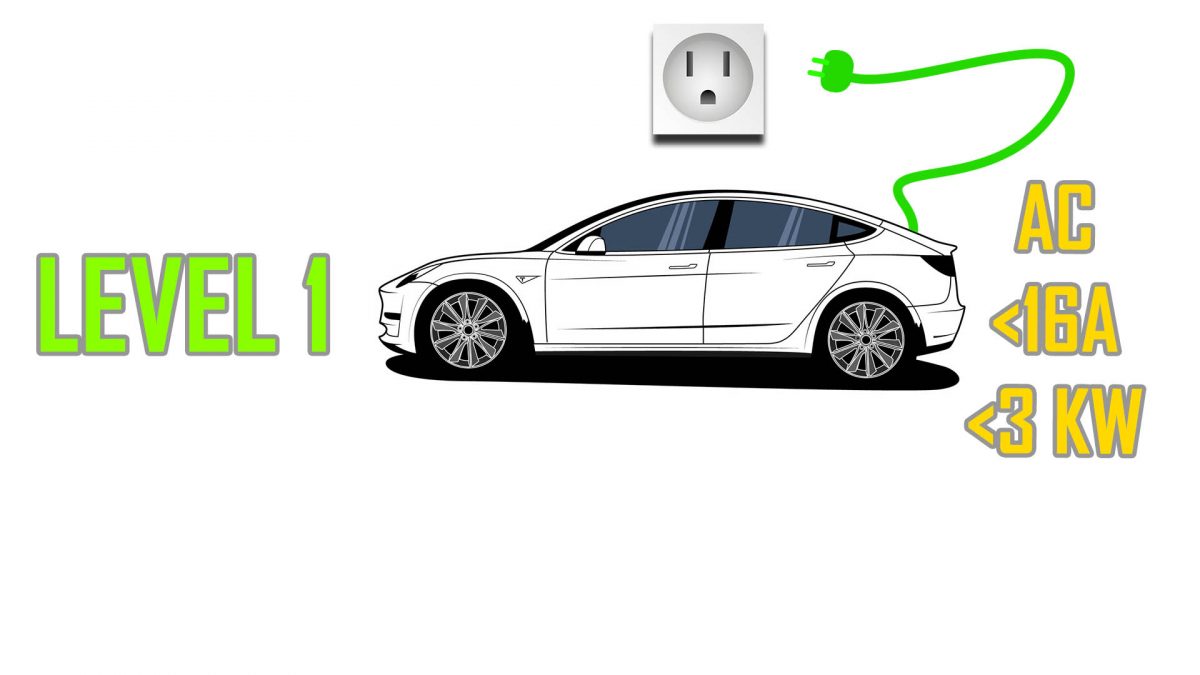AC EV Charger Levels of Electric Vehicles Explained
In general, there are several classifications of charging methods for electric vehicles. The American SAE terminology distinguishes three levels of charge of your electric car. Read what is the difference between it and what is better for your EV below.
Contents:
Level 1 EV Charger
Level 2 EV Charger
Level 3 (Level 1-2 DC)
Video EV Charging Levels
Level 1 AC Charging
Level 1 (AC) relates to the use of a standard socket for charging. This is the slowest Level of charging. For the United States, the 16A is overburdened with 120 Volts, with a maximum of 1.92 kW of peak power. For an average electric car, that means you must wait about 12 hours until you are fully charged (if your battery capacity is near 20kW). At this speed, any car can be charged without a dedicated infrastructure, simply by plugging an adapter into a socket.
Inside of typical charger are current protection and adjustment devices that close the circuit only when the connector is inserted into the charging nest of the car. Most often there is such a charger, for a maximum of 3.3 kW.
Requirements:
- Wall socket;
- Grounding;
- Charging cable.
Level 2 AC
Level 2 (AC) charging is already faster, with peak power up to 7 kW when using 240 Volt, 30A of alternating current. Almost all new EVs support it. The car is therefore equipped with an onboard charger that straightens the current and recharges the batteries. Charging of electric car with battery capacity 24 kW takes between 4-5 hours.
For the fastest home charging you can use Wall Connectors that support up to 11.5 kW / 48A output. You need three phase electric power system to use it. Check out the compatibility of installed on car onboard chargers, not every car supports it.
Requirements:
- Wall mounted charger or portable EV Charger with control box;
- Grounding;
- Three Phase Electric Power;
- Onboard charger with support of fast charge.
Level 3 (DC Level 1 and 2)
DC Levels 1 and 2 often mistakely called “Level 3 Charging”. But real name of this type is Superchargers or Rapid Chargers with use of direct current. AC/DC inverter provide up to 500 kW of output and charge your EV with lightning fast speed. But not all electric cars support this standard. This type of chargers is divided on Level 1 (less than 50 kW) and Level 2 (more than 50 kW). Charging time decreased to 40-80 minutes (20-80%).
Unfortunately, this Level of charging is very expensive because of Superchargers price. That is why only public stations widespread in large cities and on highways.
Requirements:
- Superchargers / Rapid Chargers;
- CCS Combo Socket, Tesla or CHAdeMO socket on Electric car;
- Onboard charger with support of rapid charge.
Obviously, that Level 3 is the better way for EV owners to charge batteries, but there are lots of problems caused by Rapid chargers:
- Battery’s life decrease much faster;
- Price of charging on DC Rapid Chargers bigger than from own socket;
| Level 1 | Level 2 | Level 3 |
|---|
| Current | Alternating | Alternating | Direct |
| Amperage, A | <16 | 15-80 | up to 800 |
| Output Power, kW | <3.4 | 3.4-11.5 | up to 500 |
| Charging speed, km/h | 5-20 | <60 | up to 800 |
EV Chargers Levels 1-2-3 video
Post time: Apr-17-2021




